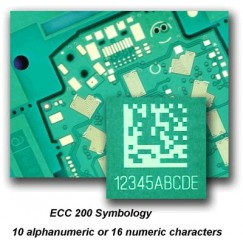The Direct Part Marking (DPM) method has been around for several years. Until recently, however, its implementation was relatively costly and achieved only average readability rates, limiting its use. Today, companies like ZEBRA and KEYENCE offer a new approach to DPM technology, ensuring more flexible and reliable scanning and enabling broader applications.
DPM meets the requirements for continuous tracking.
Tracking individual components can be problematic and costly for many manufacturers. Standard product marking procedures, which are exposed to challenging environments during the manufacturing process and throughout their lifespan, do not guarantee long-term usability. DPM technology provides a permanent solution for labeling components and meets all requirements for continuous tracking. This method allows manufacturers to identify parts or devices using a mark that remains readable for the entire lifespan of the product. Parts or components are typically marked upon entering production. The most common marking method is dot peening, while laser engraving, embossing, and etching are also frequently used. Each marking method has its unique characteristics depending on the type of material, reading method, average lifespan of the product, and economic costs or implementation expenses.
How does DPM work?
DPM is essentially a barcode that is integrally linked to the marked component or product. The standard used is the 2D DataMatrix code, which is notable for its ability to encode a large amount of data in a minimal space. One code can contain either 3,116 numeric or 2,335 alphanumeric characters. Compared to a standard 1D code, it occupies about one-tenth of the space. DataMatrix symbols can be read from multiple directions and have a minimal error rate.


